Matthew 1:1-25
Page 1
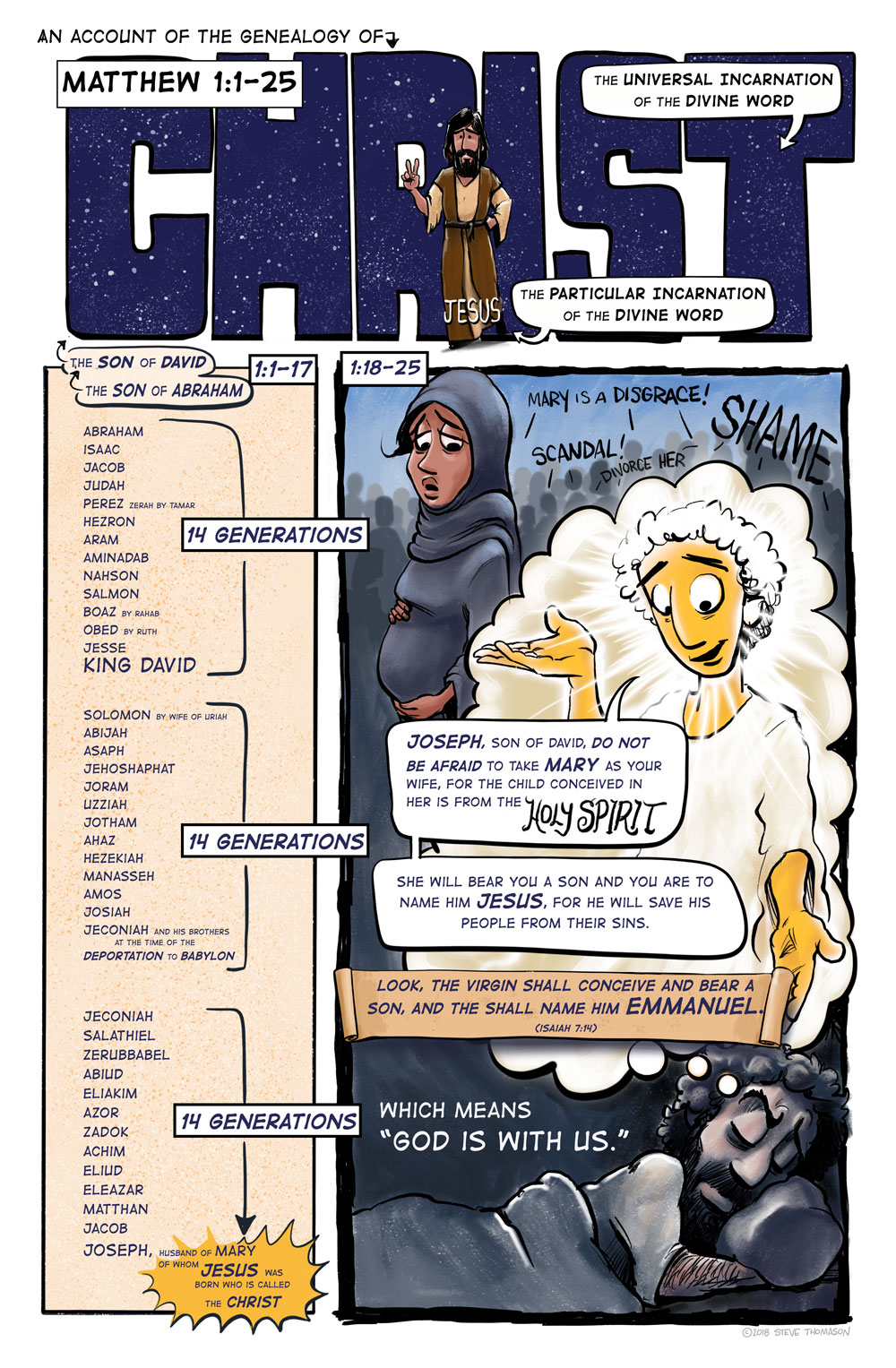
Preview the PowerPoint
A Visual Commentary
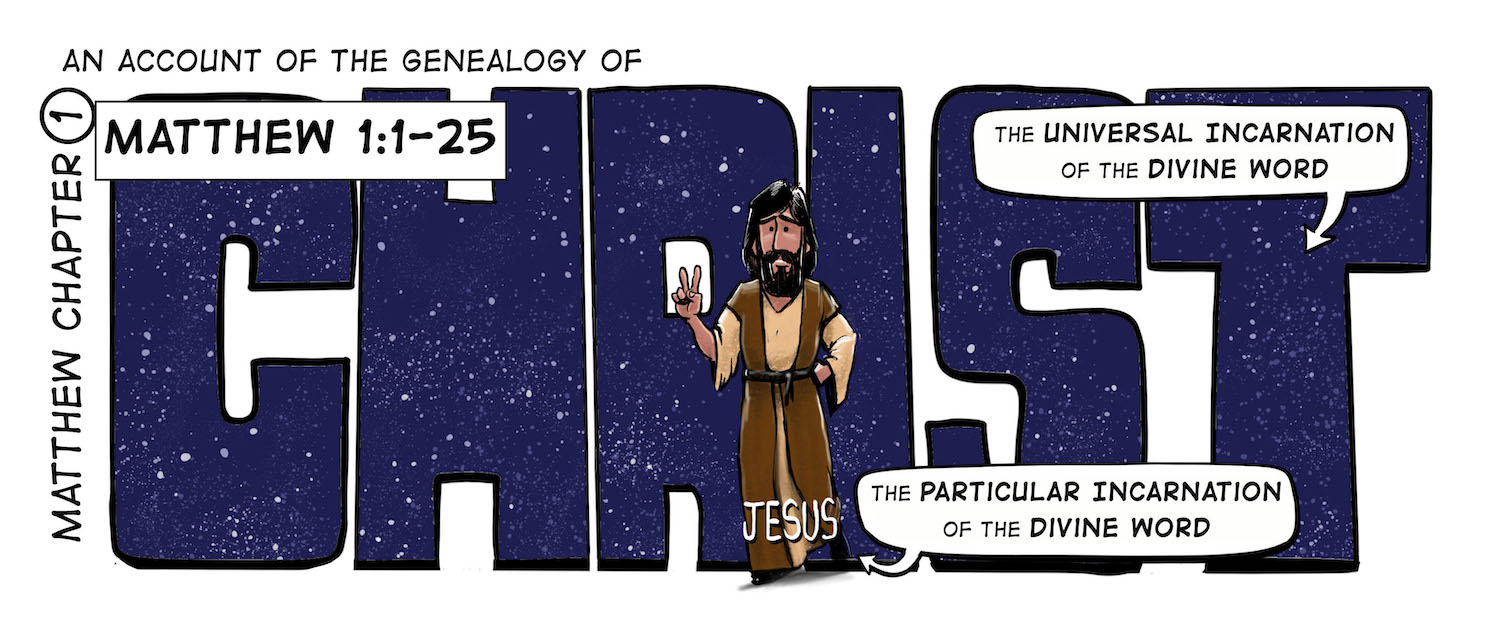
The Christ
It is important to remember that the term Christ is not Jesus’ last name. It is a greek word that is translating the Hebrew word Messiah. Both words mean the annointed one.
To call Jesus the Christ is to cue the readers to the fact that Jesus in the long awaited Messiah. To prove it, Matthew includes his geneaology.
Who Cares About Geneaologies?
Matthew begins his story with Jesus’ geneaology. It might be tempting to skip this part, but don’t. Notice some important things Matthew is doing here:
- He’s tying Jesus directly to Abraham. Jesus is a true son of Abraham. Matthew is very concerned to remind his audience that Jesus is a Jew and came to restore the Jewish people and fulfill the Jewish scriptures.
- He’s tying Jesus to David. Jesus is the true heir to the throne of Jerusalem. This stands in stark contrast to the puppet king, Herod, who currently occupies the throne.
- He’s marking the dawn of a new age. Notice how the geneaology is grouped in three sections of 14 generations each. Jesus begins the next age…
Matthew is tying Jesus all the way back to the promise God made to Abraham in Genesis 12:1-3.
Here is the geneaology of Abraham’s family. CLICK HERE to read more about it.
Where’d He Come From?
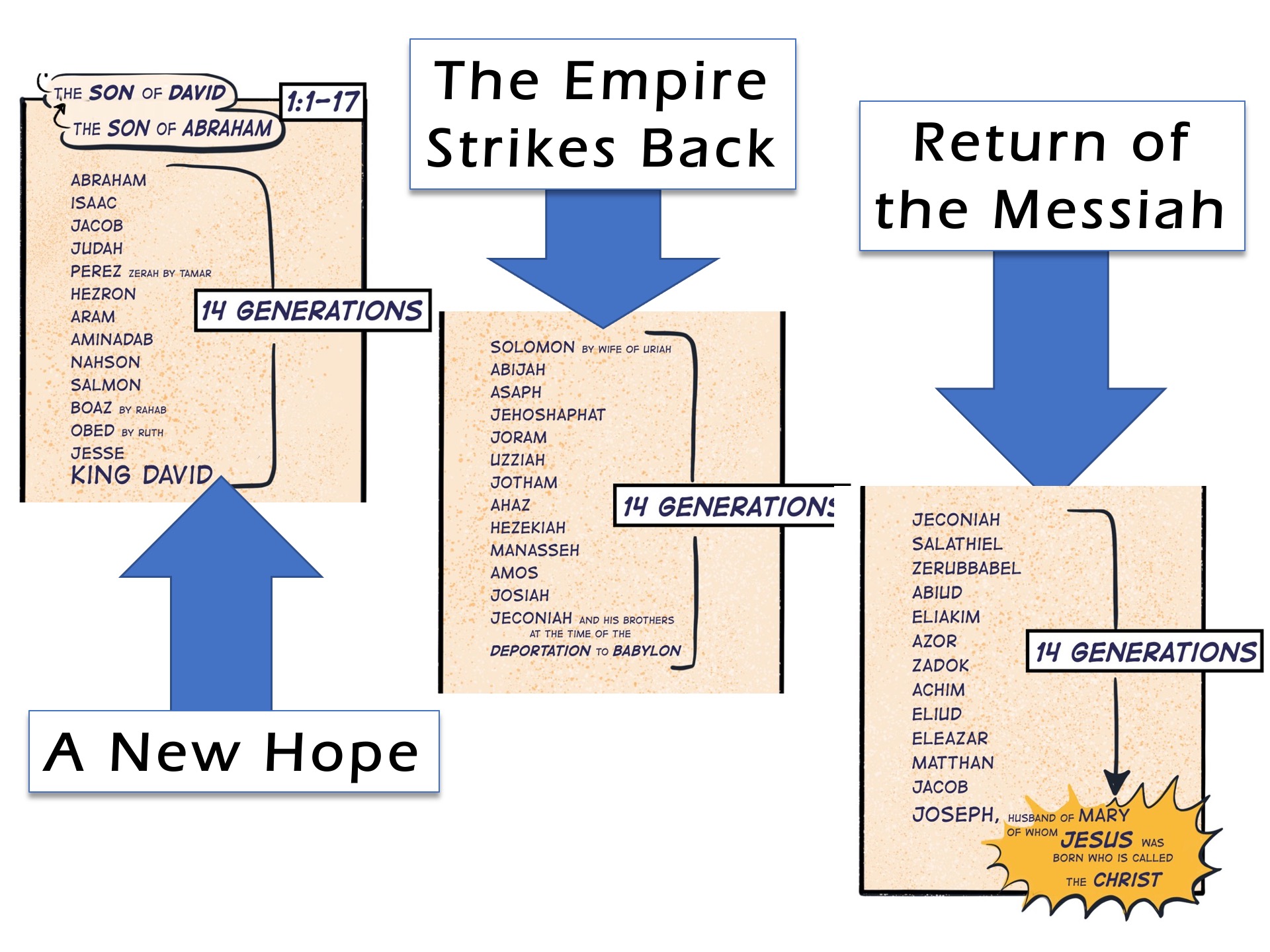
The three movements of the geneaology are very similar to the classic triology pattern.
- A New Hope. God brings Abraham on the scene to bring light to the world through a covenant people. The tribes are united through King David. Things are looking good.

- The Empire Strikes Back. Things quickly go wrong after David dies. The Kingdom is overpowered by selfishness, pride, greed, and power. They are literally defeated by invading empires and all seems lost.

- Return of the Messiah. The people have been waiting for centuries to welcome a new king like David, the annointed one. The Messiah. Jesus is that king.

What’s In A Name?
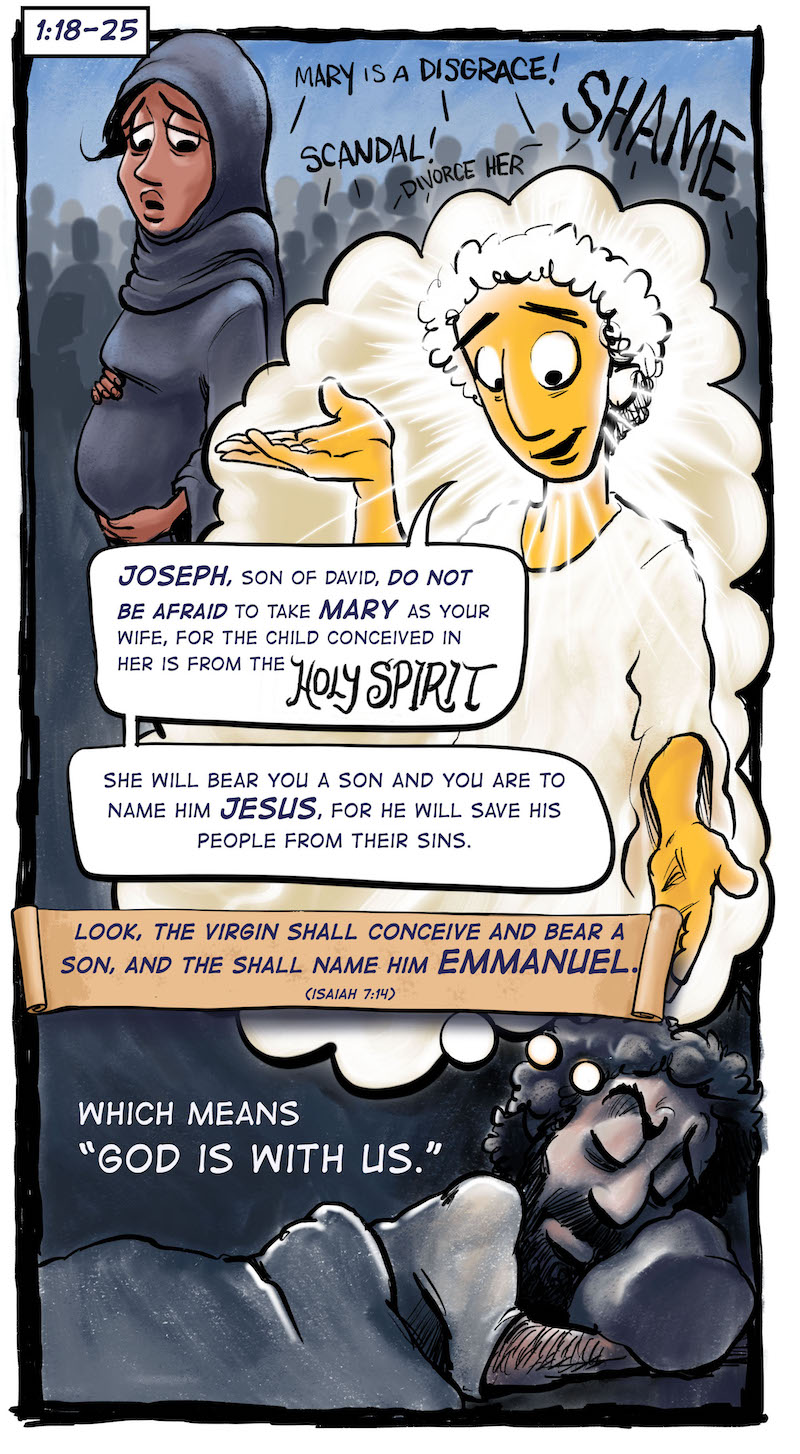
Mary and Joseph were betrothed to be married, but had not been together yet. Mary becomes pregnant. This is a huge scandal. According to the Law of Moses, Joseph had the right to dissolve the engagment and turn Mary away.
Joseph is visited by a divine messenger and told that the child in Mary’s womb was special in a few ways:
- He was conceived by the Holy Spirit.
- He fulfills the prophecy of Isaiah 7:14.
- He will be the savior of the people. Therefore, give him an appropriate name…
Jesus is called two things in this passage. First, Jesus. This is the Hebrew name Joshua. The name literally means Jehovah Saved. It was the name of Moses’ successor at the end of the Torah (the Exodus story).
Second, Jesus is called Immanuel. It is another Hebrew term that means God is with us.
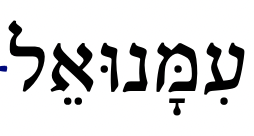
emanu = with us
el = God
Matthew quotes Isaiah 7:14 when the prophet comforts Jerusalem during their time of beseigment that God would be with them through the trials. In that context, the child born to a “young maiden” (not necessarily a sexual virgin) was actually Isaiah’s own son. Isaiah was using the span of his son’s lifetime as a timetable for how long it would take for the events he was discussing to unfold.
Matthew is making all kinds of connections between Jesus and the Hebrew scriptures in this chapter.
His main point: Jesus is the Messiah that the Jewish people have been waiting for and, like Abraham, Moses, Joshua, and David, he will rescue his people.



